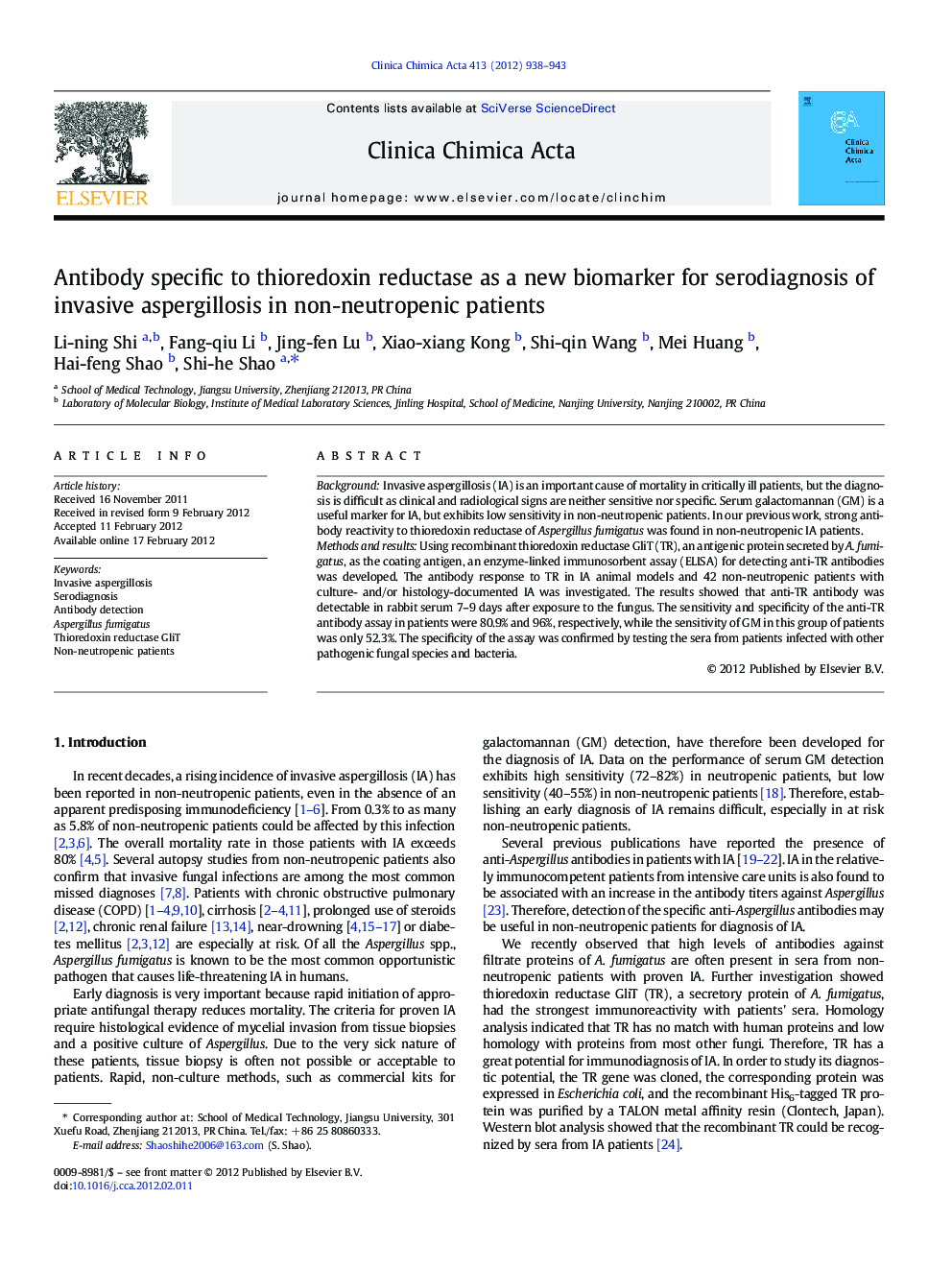| Article ID | Journal | Published Year | Pages | File Type |
|---|---|---|---|---|
| 1965889 | Clinica Chimica Acta | 2012 | 6 Pages |
BackgroundInvasive aspergillosis (IA) is an important cause of mortality in critically ill patients, but the diagnosis is difficult as clinical and radiological signs are neither sensitive nor specific. Serum galactomannan (GM) is a useful marker for IA, but exhibits low sensitivity in non-neutropenic patients. In our previous work, strong antibody reactivity to thioredoxin reductase of Aspergillus fumigatus was found in non-neutropenic IA patients.Methods and resultsUsing recombinant thioredoxin reductase GliT (TR), an antigenic protein secreted by A. fumigatus, as the coating antigen, an enzyme-linked immunosorbent assay (ELISA) for detecting anti-TR antibodies was developed. The antibody response to TR in IA animal models and 42 non-neutropenic patients with culture- and/or histology-documented IA was investigated. The results showed that anti-TR antibody was detectable in rabbit serum 7–9 days after exposure to the fungus. The sensitivity and specificity of the anti-TR antibody assay in patients were 80.9% and 96%, respectively, while the sensitivity of GM in this group of patients was only 52.3%. The specificity of the assay was confirmed by testing the sera from patients infected with other pathogenic fungal species and bacteria.
ConclusionsAnti-TR antibody is a useful marker in establishing the diagnosis of IA in non-neutropenic patients.Highlights►Diagnosis of IA is still difficult in non-neutropenic patients. ►We set up an ELISA assay for detecting anti-TR antibodies. ►The anti-TR assay has a good sensitivity (80.9%) in non-neutropenic IA patients. ►The anti-TR assay has a high specificity (96%) in non-neutropenic IA patients. ►The anti-TR assay is a valuable tool for IA diagnosis in non-neutropenic patients.
